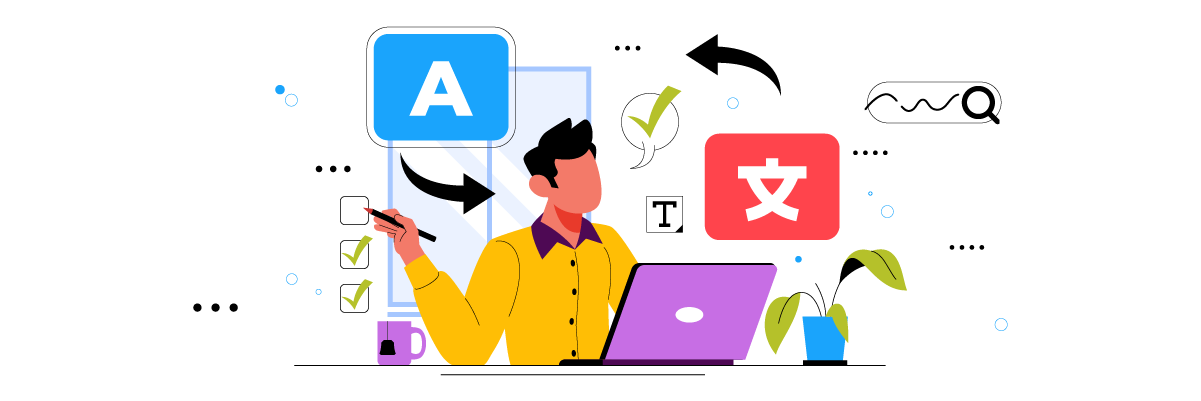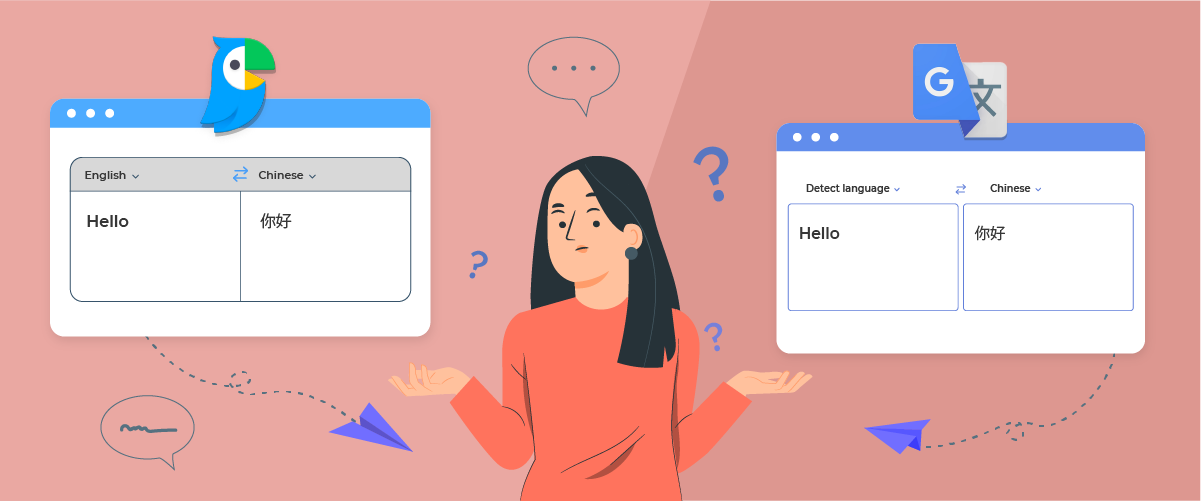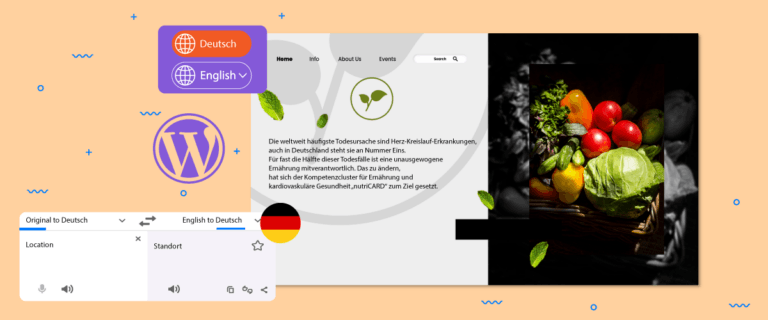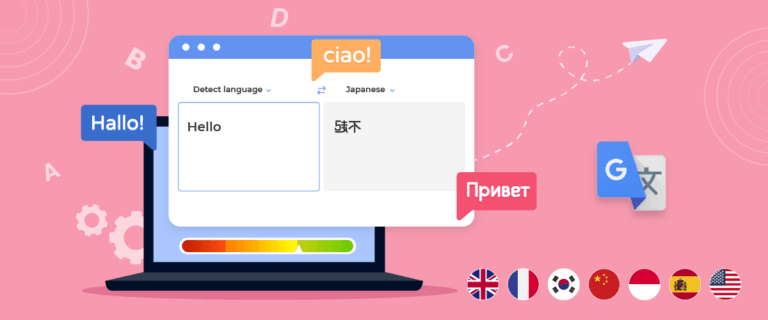Machine translation tools like Naver’s Papago and Google Translate have emerged to bridge these gaps. While both platforms offer efficient translation services, they differ in several key aspects.
This comparative analysis will explore the strengths and weaknesses of Naver’s Papago and Google Translate, considering their language support, accuracy, consumer base, pronunciation, and long-form translation capabilities. By understanding these differences, users can choose which platform best aligns with their translation needs.
What is Naver’s Papago?

Naver’s Papago is a web-based translation tool developed by Naver Corp, one of the largest internet companies in South Korea. Papago is a translation platform that was officially launched in 2017 and has become the most popular translation tool in South Korea.
It uses neural machine translation technology that learns from users’ previous searches to predict translations.
As part of Naver Corporation, Papago has become the dominant translation platform in South Korea, surpassing Google Translate usage in the country. Although originally designed as a separate app, Papago is now integrated with Naver’s main page, reflecting its popularity among users.
What is Google Translate?
Google Translate is a free translation tool developed by Google. It allows users to translate different types of content from one language to another quickly and easily. Here is a full explanation of Google Translate.
Google Translate is available in two main formats: a mobile app and a web version, which can be accessed through a browser on a computer or mobile device.
It uses a combination of statistical and neural machine translation approaches to produce accurate and contextualized translations. The service integrates with other Google products, such as Chrome for web page translation and Google Lens for text translation from images.

Differences between Naver Papago vs Google Translate
Google Translate and Naver’s Papago are two translation tools that have become popular among global users. While both serve the same purpose, there are some significant differences between the two. Here are some of them.
Language support

Regarding language support, Google Translate has a significant advantage over Naver Papago. Google Translate offers translation services for 115 languages, covering nearly all major world languages and many regional languages. In contrast, Naver’s Papago focuses on a narrower spectrum of languages, supporting only 15.
While this number is much smaller than that of Google Translate, Papago prioritizes the quality of translations for its supported languages, particularly Korean and other Asian languages such as Japanese, Chinese, and Vietnamese.
Accuracy of translation

Regarding translation accuracy, Naver Papago is often considered superior, especially for Korean and other Asian languages. This advantage is largely due to Papago’s focus on fewer languages, allowing them to allocate more resources and attention to improving translation quality for those languages.
Despite offering a much broader language coverage, Google Translate sometimes struggles to capture language nuances and cultural contexts for certain languages. However, Google continues to enhance its translation algorithms and has made significant progress in accuracy for many languages. It’s important to note that both tools still face challenges in translating idioms, metaphors, and complex literary texts perfectly. Translation accuracy also tends to decrease with the increasing length and complexity of the translated text.
User base

Google Translate has a wide and diverse user base, encompassing users from around the globe. As part of Google’s extensive ecosystem, Google Translate has become the default choice for many global internet users.
On the other hand, Naver’s Papago has a more geographically focused consumer base. Papago is particularly popular in South Korea and is gaining recognition in other East Asian countries. Many Korean users have switched from Google Translate to Papago due to its higher accuracy in Korean. Papago is also gaining popularity among users from Japan, China, and Vietnam who wish to translate to or from Korean. However, many users still prefer Google Translate to translate English and non-Asian languages.
Pronunciation

The pronunciation features of both translation tools are still being developed and refined. Google Translate and Naver’s Papago face challenges in providing accurate pronunciations for all supported languages. Google Translate is known for its excellent English pronunciation, while Papago excels in Korean, aligning with its roots and main focus. For other languages, the quality of pronunciation varies across both platforms.
Both companies continue to invest in voice recognition and synthesis technology to improve pronunciation accuracy. However, there is still room for improvement, especially for less common languages or those with complex phonetic systems.
Long-form translation

Google Translate still has the edge over Naver Papago regarding long-text translation. Google Translate is more frequently used to translate academic articles, official documents, and other long texts. Its ability to handle complex sentence structures in lengthy texts has made it the primary choice for more serious and formal translation needs. Naver’s Papago, while excelling in everyday translations and short phrases, particularly in Korean, still lags in long text translation. Users in Korea and other Asian countries tend to use Papago for daily conversation, short word or phrase translations, and informal communication.
However, many users still turn to Google Translate for longer and more complex content translations. App Annie statistics indicate that Google Translate has a higher number of monthly active users for long content translations than Papago, although Papago continues to enhance its capabilities in this area.
Technology used

Google uses Google’s NMT system, or Google Neural Machine Translation (GNMT), which utilizes complex neural networks to understand context and produce more natural and accurate translations.
On the other hand, Naver Papago adopted an NMT approach from the start. Papago uses a technology called “Hybrid Neural Machine Translation” (HNMT), which combines the strengths of NMT with natural language processing tailored for Asian languages. Papago’s HNMT system is specifically designed to handle the complexities and nuances of Asian languages, particularly Korean. This allows Papago to capture better subtleties and cultural context in translations of Asian languages.
Third-party integration

Google Translate has a significant advantage in terms of third-party integration. As part of Google’s extensive ecosystem, Google Translate seamlessly integrates with various other Google products and services, such as Chrome, Google Search, Gmail, and Google Docs. This lets users easily access translation features across different platforms without switching applications. Additionally, Google provides a robust and user-friendly API (Application Programming Interface) for Google Translate.
In contrast, Naver’s Papago has a more focused approach within Naver’s ecosystem. This includes integration with the Naver web portal, LINE messaging app (partly owned by Naver), and other popular Naver services in Korea and other Asian countries. Papago also provides an API for developers, but its scope is more limited than that of Google Translate.
Alternative solution for Naver Papago and Google Translate

Although Google Translate and Naver Papago are popular translation platforms, other alternatives can address quality issues and offer automatic translations.
One promising alternative is Linguise automatic translation. Here are some of its advantages.
- Language support: Linguise supports over 85 languages, including widely spoken international languages and less common traditional ones, making it more inclusive than other platforms.
- Accuracy of translation: Linguise claims a translation accuracy of up to 97%, nearly matching human-level quality. This high accuracy is achieved through advanced machine translation technology, allowing it to capture language nuances and context more effectively.
- Consumer base: Linguise is used globally, with clients across Asia, Europe, America, and Africa, showcasing its ability to meet diverse and complex translation needs in different markets and cultures.
- Pronunciation: Using the latest NMT and AI translation technology, Linguise ensures accurate written translations and focuses on proper pronunciation, enhancing its value in spoken communication.
- Long-form translation: Linguise can handle website translations of hundreds of pages and millions of characters, which is ideal for large projects like corporate sites, e-commerce platforms, or educational content that require consistent and accurate translations.
- Third-party integration: With support from over 40 CMS and web builders, Linguise simplifies integrating its translation services into existing web infrastructures, improving efficiency and reducing complexity for multilingual content management.
With these strong features, Linguise offers a comprehensive solution that overcomes some limitations in Google Translate or Naver’s Papago. Its ability to handle large-scale translations with high accuracy, broad language support, and easy integration makes it a worthy alternative for more advanced automatic translation needs.
In addition, Linguise is also equipped with several other features that Naver Papago and Google Translate do not have, including.
- Front-end live editor that can collaborate with professional translators.
- Automatically optimize for multilingual SEO
- Global translation exclusion
The following is a comparison table between the three tools above.
Naver Papago | Google Translate | Linguise | |
Language support | Support 15 languages | Support almost 115 languages | Support 85 languages |
Accuracy of translation | Superior accuracy in Korean and some Asian languages | Almost accurate enough for all languages | Translation quality is almost 97% like human translation |
Consumer base | It is more popular in South Korea and some East Asian countries | Users come from all over the world | Used across countries and continents |
Pronunciation | Excels in Korean pronunciation | Excels in English pronunciation | Generally excellent in almost all languages |
Long-form translation | Still lagging in translation of long content | Supports translation of long content | Supports long translations up to thousands of pages and millions of characters |
Technology used | Using Hybrid Neural Machine Translation technology focused on Asian languages | Using Google’s NMT technology | Using NMT technology combines AI translation |
Third-party integration | Integrated with the Naver ecosystem (Naver web portal and LINE app), provides API but limited | Integrates with the vast Google ecosystem and provides APIs | Integrates with over 40 CMS, web builder,s and others third-party |
Conclusion
Both Naver Papago and Google Translate offer unique strengths in machine translation. While Google Translate boasts a wider language coverage and better integration with third-party services, Papago excels in accuracy for Korean and several Asian languages. The choice between these two largely depends on your specific language needs and the context of your translation tasks.
However, if you’re seeking an alternative that combines extensive language support with high accuracy and powerful features, consider giving Linguise a try. With support for over 85 languages, up to 97% translation accuracy, and the ability to handle large-scale website translations, Linguise offers a compelling solution for diverse translation needs. Create a Linguise account today and take advantage of their free 30-day trial, which includes a generous limit of 600,000 words and unlimited language




